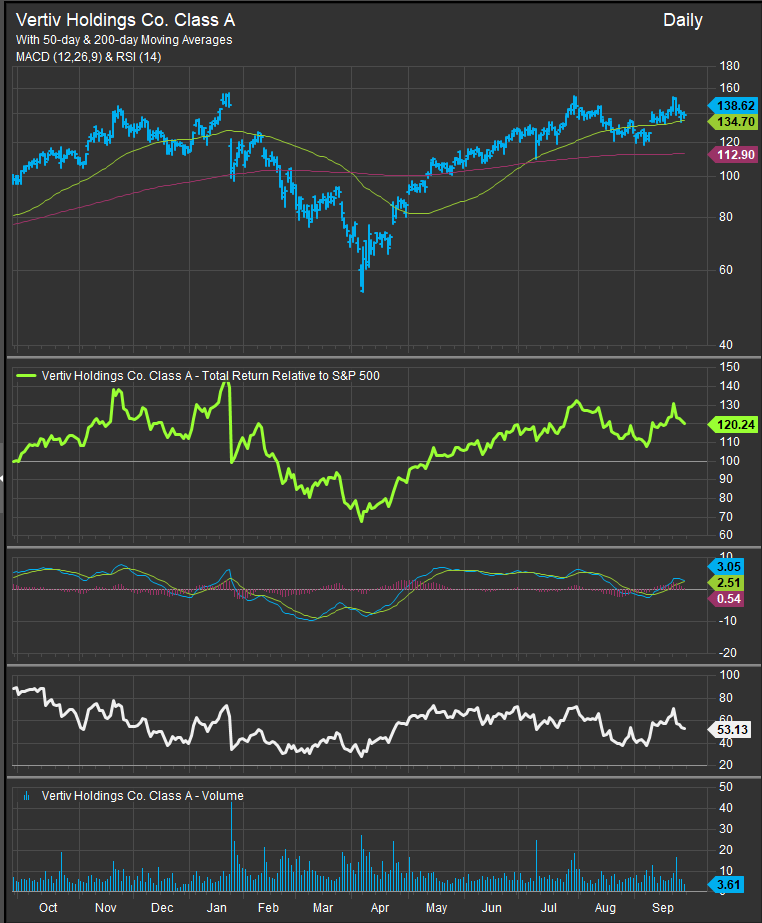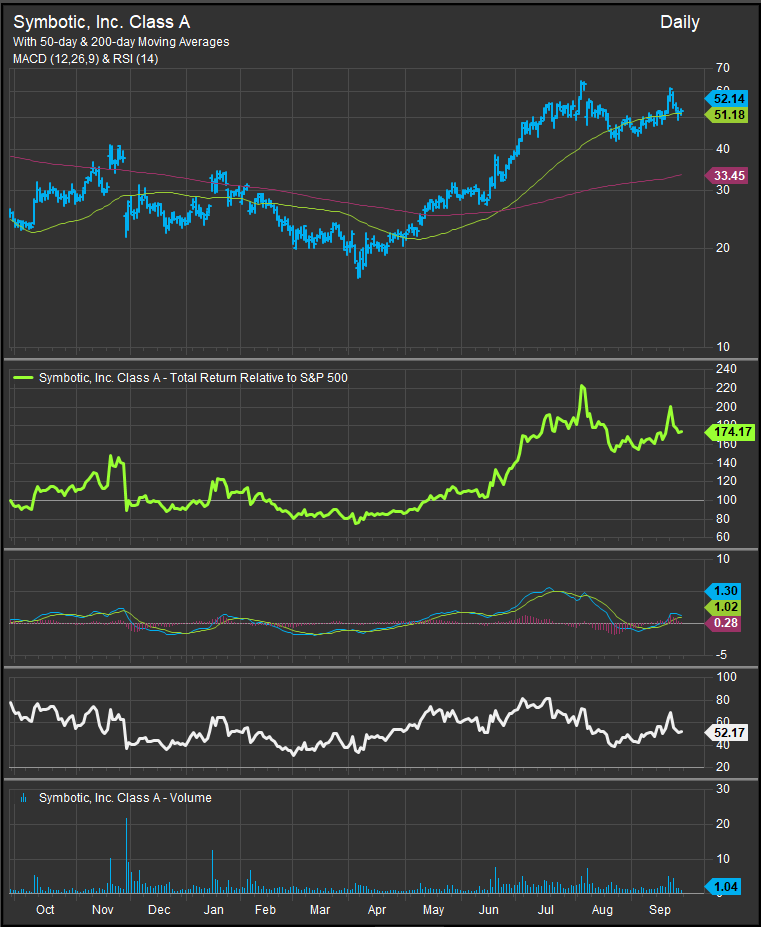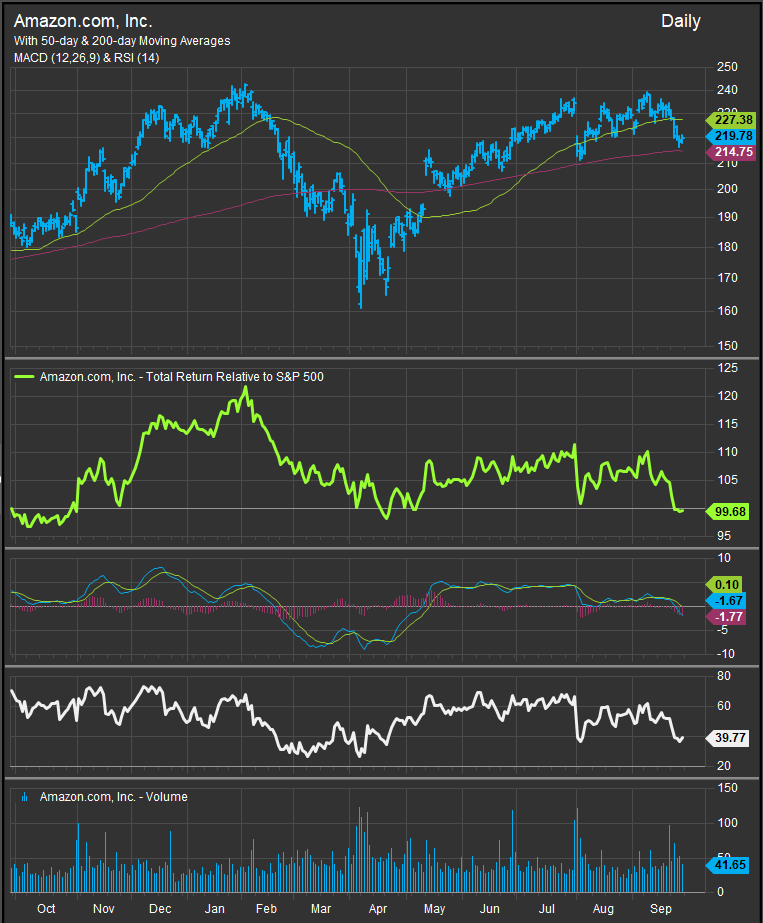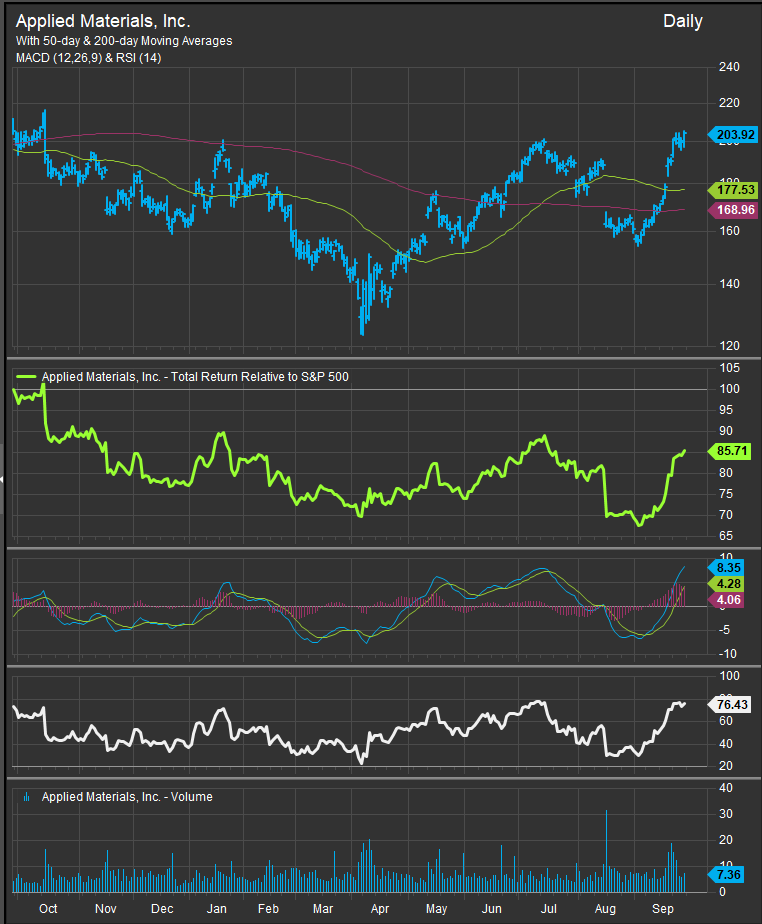September 28, 2025
September 2025 has been dominated by renewed focus on AI and automation, even as markets wrestle with tariff headlines and mixed Fed commentary. As investors contemplate the speculative merits of AI vs. its actual delivered results, we continue to explore the expanding AI econ-system. One thing we’ve noticed is that while many legacy brands and business models are struggling in this cycle, the AI theme is elevating a growing number of stocks across sectors and industries. We wonder if AI will be truly transformational, in that it won’t just be used by legacy businesses to make them more efficient, it may well disrupt a great many of them and cause them to be reinvented.
Despite the Fed’s concerns for the economy, Nvidia’s announcement of up to a $100B investment in OpenAI fueled another leg of the AI narrative, though it also invited scrutiny of “circularity,” as chipmakers fund customers who then purchase their chips. Micron’s earnings highlighted this dynamic: FQ4 revenue surged 46% on AI-related demand, with HBM sales up ~30% q/q and capacity effectively sold out through 2026. Marvell reinforced confidence with a $5B buyback and comments that demand for custom AI silicon shows no sign of slowing. Intel rallied sharply following reports of talks with Apple about a manufacturing investment—a potential vote of confidence in its foundry turnaround—while also exploring partnerships with TSMC.
Among semiconductor equipment names, Applied Materials (chart below) was upgraded on stronger fab equipment sales, particularly in memory, while Onto Innovation drew positive analyst calls around regaining advanced packaging market share. On the software and platform side, Oracle came under pressure after a sell-side initiation at “sell” and lingering doubts about cloud AI revenue recognition, while Microsoft, Alphabet, and Meta continued to push forward with AI copilots, Gemini, and AI-driven consumer features. Palantir remained in focus with BofA lifting its price target to $215 on expectations that its Maven Smart System could generate over $8B in government sales by 2030.
AMAT
AI infrastructure enablers have also been prominent. Vertiv (chart below) bounced after pushback against fears its cooling technology could be displaced by Microsoft’s new designs, while Quanta Services and Eaton continue to benefit from smart grid and datacenter build-outs. Energy security and power reliability remain critical tailwinds, with the White House exploring a potential 10% stake in Lithium Americas to secure domestic battery and storage capacity. Robotics remains a mixed picture: Symbotic (chart below) fell 10%+ on a downgrade to “sell” amid valuation and execution concerns, while Tesla gained approvals for autonomous vehicle testing in Arizona and is positioning Optimus as a near-term automation catalyst. IBM also made headlines by partnering with HSBC to demonstrate the world’s first quantum-enabled algorithmic trading system, delivering up to a 34% improvement in fill rates.
VRT

SYM

At the sector level, exposure to AI themes is most concentrated in Information Technology, where semiconductors and equipment account for nearly 25% of sector revenues tied to AI infrastructure and compute. Communication Services provides the next major leg of exposure, with companies like Meta (chart below), Alphabet, and Microsoft driving platform-level adoption—roughly 15–20% of revenues in this sector now have direct or indirect AI linkages. Industrials capture around 10% of AI-related revenues, primarily through automation, robotics, and smart grid spending, while Utilities are emerging as indirect beneficiaries of datacenter and electrification demand. Healthcare and Consumer Discretionary also provide select leverage via diagnostics, biotech automation, and autonomous mobility, though at much smaller weights.
META

On the path to autonomous robots, progress is accelerating in controlled environments. Logistics, retail fulfillment, and warehousing already deploy semi-autonomous systems from Amazon (chart below) Robotics and Symbotic. Tesla’s Optimus prototype and Boston Dynamics’ humanoid designs have showcased progress in dexterity and navigation, but scaling general-purpose robots remains a five-to-ten-year challenge. Obstacles include cost, power efficiency, and safety validation, though the narrowing gap between industrial automation and adaptive AI suggests broader commercial deployment is approaching.
AMZN

Sentient AI, by contrast, remains speculative. While systems like GPT-style models demonstrate emergent reasoning, pattern recognition, and decision-making capabilities, there is no scientific evidence they possess subjective awareness or consciousness. Most AI researchers agree that sentience would require breakthroughs in neuroscience, cognition, and hardware that are not currently on the horizon. The focus instead is on scaling alignment, interpretability, and safe deployment rather than on true sentience.
The risks to this investment theme are substantial. On the technical side, ROI and monetization challenges loom large—Bain & Co. recently estimated that AI companies may face a $800B annual revenue shortfall by 2030 relative to the $2T in computing power they will require. Tariffs and trade restrictions (e.g., U.S. probes into robotics and medical equipment, and China’s ban on Nvidia AI chips) could fragment supply chains. Regulatory risk is also rising: the U.S. is weighing limits on H-1B visas used by AI-heavy industries, while Meta launched a PAC to fight state-level AI regulations. Finally, the theme faces cyclical risks: elevated valuations, vendor financing “circularity,” and potential overbuild in datacenter capacity all echo patterns seen during the dot-com bubble.
Conclusion:
The clearest equity exposure to AI, automation, networking, and smart infrastructure lies within Information Technology (NVDA, MU, INTC, AMAT, ONTO), Communication Services (META, GOOGL, MSFT, Palantir), and Industrials (Vertiv, Quanta, Tesla, Symbotic). Utilities provide secondary leverage as datacenter and electrification demand accelerates. Together, these sectors anchor the investable AI cycle, with IT and Comm Services leading in compute and software, Industrials in automation and grids, and Utilities in power infrastructure. Investors are looking for AI technology to justify the hype by boosting the efficiency and profitability of their operations, but we are seeing AI players actuate their own eco-system of thriving companies across sectors. It may be that legacy operating co.’s will adopt AI and integrate it for their own continued success, but it may be that AI technology will be utilized by completely new hands to solve our needs in entirely different ways that bypass legacy operating co.’s entirely. We need to keep an open mind on what AI is and how it works. We’ve all seen some sci-fi movies, but anyone who is sure they know how this plays out is putting the cart before the horse.
Bibliography
- Bloomberg. (September 2025). Federal Reserve fuels Wall Street rally in broadest cross-asset surge since 2021 frenzy.
- Bloomberg. (September 2025). Wall Street bets on faster rate cuts, boosting the US economy and markets but adding risk of investors getting ahead of the Fed.
- Bloomberg. (September 2025). US stocks add $15T in market value since start of trade war, though growth worries linger.
- Bloomberg. (September 2025). Investors face bond shortage, turn to credit derivatives market to deploy excess cash.
- Bloomberg. (September 2025). Chinese tech stocks surge, outpacing Nasdaq thanks to AI and chip independence efforts.
- Bloomberg. (September 2025). Alibaba pledges $53B for AI investment and model development.
- Bloomberg. (September 2025). Intel approaches Apple for potential investment in its foundry business.
- Financial Times (FT). (September 2025). Chinese regulators ban domestic tech companies from buying Nvidia AI chips.
- Financial Times (FT). (September 2025). EU tech regulators probe Apple, Google, and Microsoft over financial fraud.
- Financial Times (FT). (September 2025). Canada, European startup ecosystems see opportunity to capitalize on US H-1B visa changes.
- Financial Times (FT). (September 2025). AI and robotics adoption trends in industrials and logistics.
- Reuters. (September 2025). Trump backs Union Pacific’s Norfolk Southern bid to create $85B US rail giant.
- Reuters. (September 2025). Alibaba integrates Nvidia’s development tools into cloud software platform.
- Reuters. (September 2025). China books Argentine soybean cargoes, continues to eschew US supply.
- Axios. (September 2025). AI investment boom driving growth but leaving human workers behind.
- Axios. (September 2025). White House confirms new $100K H-1B visa fee and clarifies scope.
- CNBC. (September 2025). Apple’s move to control all core iPhone chips signals renewed AI focus.
- CNBC. (September 2025). Berkshire Hathaway exits BYD, ending long-standing EV investment.
- CNBC. (September 2025). Symbotic downgraded on valuation concerns despite AI automation leadership.
- CNBC. (September 2025). Honda halts production of GM-made EV in Tennessee.
- Washington Post. (September 2025). US consumers pull back spending, particularly lower-income households.
- Washington Post. (September 2025). Economists warn US households “stuck” amid high costs and weak mobility.
- StreetAccount. (September 2025). Daily U.S. equity market recaps and FOMC event summaries. FactSet Research Systems.
- Bain & Company. (September 2025). AI infrastructure cost projections and ROI analysis.
- Ned Davis Research. (September 2025). Historical analysis of equity performance following Fed easing cycles.
- Goldman Sachs. (September 2025). AI investment flows and sentiment data.
- Bank of America Global Fund Manager Survey. (September 2025). Equity allocation, sentiment, and positioning data
Data sourced from FactSet Research Systems Inc.

